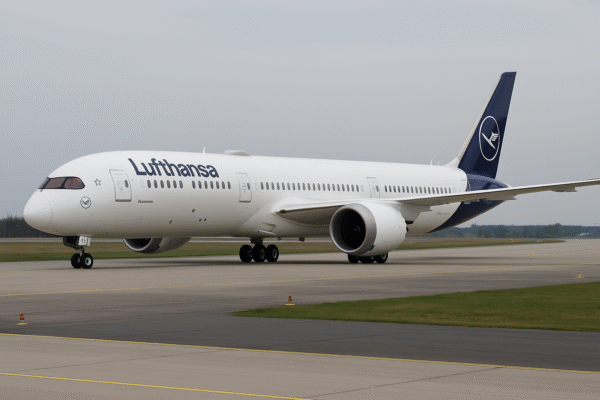The Southeast Asian tourism market is undergoing significant changes. Thailand, once the region’s leading destination, is grappling with a noticeable slowdown as rising border tensions with Cambodia disrupt visitor confidence. Meanwhile, Vietnam is rapidly emerging as a tourism powerhouse, driven by strategic visa reforms, affordable travel options, and strong marketing that has captured the attention of international travelers.
Thailand Faces Decline Amid Border Tensions
Thailand has long been a favorite destination for travelers worldwide, known for its pristine beaches, vibrant cities, rich cultural heritage, and affordable luxury experiences. However, ongoing tensions along the Thai-Cambodian border have led to an unexpected downturn in international arrivals.
Hotel owners and operators across major tourist hubs such as Bangkok, Phuket, and Pattaya report a sharp decline in occupancy, with estimates suggesting a drop of more than 10% in bookings compared to the same period last year. Popular resort areas are particularly hard-hit, as safety concerns discourage travelers from committing to trips.
Industry leaders warn that if the situation persists, Thailand could see deeper revenue losses across its tourism sector, impacting not just hotels but also airlines, restaurants, and local businesses that rely on steady tourist flows. This comes at a time when the industry was still trying to fully recover from the challenges left by the global pandemic.
Economic Impact on Thailand’s Hospitality Sector
The downturn is being felt across the hospitality spectrum, from luxury resorts to boutique hotels and family-run guesthouses. Reduced foreign arrivals mean lower occupancy rates, decreased spending on entertainment and excursions, and greater competition among hotels for the shrinking pool of visitors.
Despite the challenges, Thailand’s enduring appeal remains strong. Iconic destinations like Chiang Mai, Krabi, and Koh Samui continue to attract travelers seeking cultural immersion and natural beauty. However, experts believe that unless stability is restored and proactive marketing measures are implemented, Thailand risks losing a share of the regional tourism market to more aggressive competitors.
Vietnam’s Tourism Boom
In sharp contrast, Vietnam is experiencing a remarkable surge in visitor numbers, positioning itself as one of the fastest-growing destinations in Asia. Between January and July 2025, Vietnam welcomed over 12 million international visitors — a significant increase compared to the same period last year.
This growth is fueled by a combination of smart policies, modernized infrastructure, and competitive pricing. Vietnam’s government has streamlined its visa process, expanding visa-free access to travelers from more countries and simplifying e-visa applications. These changes have made it easier and more affordable for tourists to plan trips, contributing to a steady rise in foreign arrivals.
Visa Reforms Drive Growth
Vietnam’s aggressive visa reforms have been a game-changer. By extending visa-free entry to additional countries and lengthening stay durations, Vietnam has made travel more accessible and convenient. These initiatives have also attracted repeat visitors who are now considering longer stays and multiple visits throughout the year.
Coupled with affordable airfares and an expanding network of international flights, the country has quickly become a preferred destination for travelers from Europe, North America, and Asia. The strategy is paying off, with increased hotel bookings, higher occupancy rates, and a noticeable boost in tourism-related revenue.
Hotels and Infrastructure Benefit
Vietnam’s hospitality industry is thriving as a result of this surge in demand. From high-end resorts in Da Nang and Phu Quoc to boutique hotels in Hanoi and Ho Chi Minh City, the industry has seen a sharp increase in occupancy and revenue.
The country’s focus on infrastructure development — including airport expansions, upgraded highways, and new tourist facilities — has further enhanced the travel experience, making Vietnam an attractive and convenient option for both leisure and business travelers.
Comparing Thailand and Vietnam
Analysts predict that if current trends continue, Vietnam could surpass Thailand in international arrivals within the next few years. Thailand’s dependence on a handful of key destinations, combined with external challenges such as border disputes and safety concerns, has left the country vulnerable.
In contrast, Vietnam’s ability to adapt quickly and respond to global travel trends has positioned it as a flexible, forward-thinking player in the tourism market. Affordable accommodations, diverse experiences, and seamless travel processes are helping Vietnam carve out a dominant position in the region.
Opportunities for Thailand
For Thailand to regain momentum, industry experts recommend a more diversified approach to tourism. Promoting second-tier cities such as Chiang Mai, Ayutthaya, and Khon Kaen could attract travelers seeking less-crowded, culturally rich destinations.
Investing in infrastructure, enhancing safety measures, and launching targeted marketing campaigns could also help rebuild confidence and restore Thailand’s reputation as a leading global destination.
The Road Ahead for Southeast Asia
The competition between Thailand and Vietnam highlights the evolving dynamics of Southeast Asia’s travel industry. Travelers today are looking for destinations that are affordable, accessible, and safe. Vietnam’s proactive policies and modern infrastructure are meeting these demands, while Thailand’s challenges are prompting a reevaluation of its strategies.
As the region continues to grow as a global tourism hub, the key to success will lie in adaptability, innovation, and a strong commitment to providing exceptional experiences for travelers. Thailand’s rich cultural heritage and Vietnam’s rising popularity signal that Southeast Asia will remain a prime destination for global tourists — but the balance of power in the region is shifting rapidly.
For more travel news like this, keep reading Global Travel Wire















